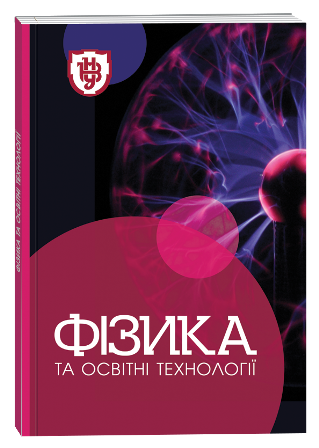TO QUESTION ABOUT NATURE AND MODELLING THE OPTICAL-INDUCED CHERENKOV RADIATION
DOI:
https://doi.org/10.32782/pet-2022-2-7Keywords:
Cherenkov radiation, А. Bohr model, I. Golub model, optical breakdown, Relaxen Optics, cascade processes, shock processes, modelingAbstract
The main problems of nature the optical-induced Cherenkov radiation are discussed. We show that this problem are connected with problem of shork excitation of heterogeneous polarization the irradiated matter. With this point of view the Cherenkov radiation is Nonlinear Optical (NLO) phenomenon. But classical NLO effects are phenomena with homogeneous shock-excited polarization. Two aspects of modeling this phenomenon are observed. First, microscopic, is based on synthesis A. Bohr theory of representation the Cherenkov radiation on the basis the scattering charge particles in media. This theory gives hyperboloid of the shape of the particle's braking track in the medium. Generating cones of Cherenkov radiation are formed by external normals to the A. Bohr hyperboloid. Second, macroscopic is based on I.Golub model of formal analogy Snell law and Cherenkov radiation. Cherenkov speed is determined as speed of shock nonlinear polarization of irradiated matter. Synthesis A. Bohr and I. Golub models allow to determine the product of nonlinear laser-induced refraction index and cpeed of nonlinear polarization. The essential difference between optically induced and classical (obtained by gamma quanta or charged particles) Cherenkov radiation lies in the radiation distribution spectrum. The classical spectrum is more homogeneous, since each particle "has" its own hyperboloid. For the optical case, we have the number of cones, which is related to the mode structure of laser radiation. So for the TEM00 fashion we have only one cone. That is why the radiation spectrum will be more heterogeneous, as in the classic case: ultraviolet radiation will be in the central part, and infrared radiation will be at the edges. The observation of laser-induced Cherenkov radiation is connected with problem of diffraction stratification and known as surface continuum radiation.
References
Бор О. Влияние взаимодействия атомов на прохождение зряженных частиц через вещество. В: Н. Бор. Прохождение атомных частиц через вещество. Москва: Иностранная литература, 1950. с. 105–143.
Н. Бор. Прохождение атомных частиц через вещество. Москва: Иностранная литература, 1950. 150 c/
Boyd R. W., Lukishova S. G., Shen J.-R., editors. Self-Focusing: Past and Present. Springer Series: Topics in Applied Physics. Vol. 114. New York: Springer, 2009. 605 p.
Франк И. М. Излучение Вавилова-Черенкова. Теоретические аспекты. Москва: Наука, 1988. 286 с.
Golub I. Optical characteristics of supercontinuum generation. Optics Letters. 1990; 15: 305-307.
Golub I., Shuker R., Eres G. On the optical characteristics of the conical emission. Optics Communications. Vol. 57, Is. 2, 1986. – P. 143-145
Jelley J. V. Čerenkov radiation and its applications. New York: Pergamon, 1958. 304 p.
Кобзев А. П. Механизм Черенковского излучения. Элементарные частицы и атомное ядро, том. 41, вып. 3, 2010. – С. 830-867.
Landau L. D., Lifshits E. M. The Classical Theory of Fields. Third Revised English Edition. Course of Theoretical Physics, Volume 2. Oxford, etc.: Pergamon Press, 1971. 387 p.
Okada T., Tomita T., Matsuo S., Hashimoto S., Ishida Y., Kiyama S., Takahashi T. Formation of periodic strain layers associated with nanovoids inside a silicon carbide single crystal induced by femtosecond laser irradiation. J. Appl. Phys. 2009 v. 106, p.054307, 2009. – 5 p.
Okada T., Tomita T., Matsuo S., Hashimoto S., Kashino R., Ito T. Formation of nanovoids in femtosecond laser irradiated single crystal silicon carbide. Material Science Forum. 2012; 725: 19 – 22.
Trokhimchuck P. P. Relaxed Optics: Modelling and Discussions. Saarbrukken: Lambert Academic Press, 2020. 249 p.
Trokhimchuck P. P. Relaxed Optics: Modelling and Discussions 2. Saarbrukken, Cisinau: Lambert Academic Press, 2022. 210 p.
Yablonovich E. Optical Dielectric Srength of AlkaliHalide Crystalls Obtained by Laserinduced Breakdown. Appl. Phys. Lett. 1971; 19: 495-497.








